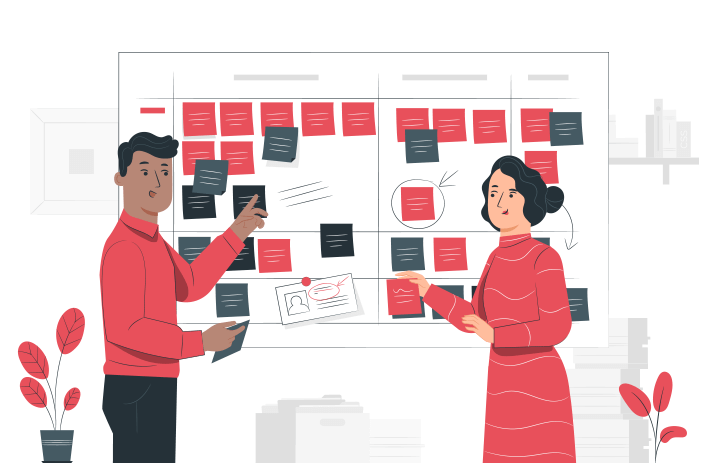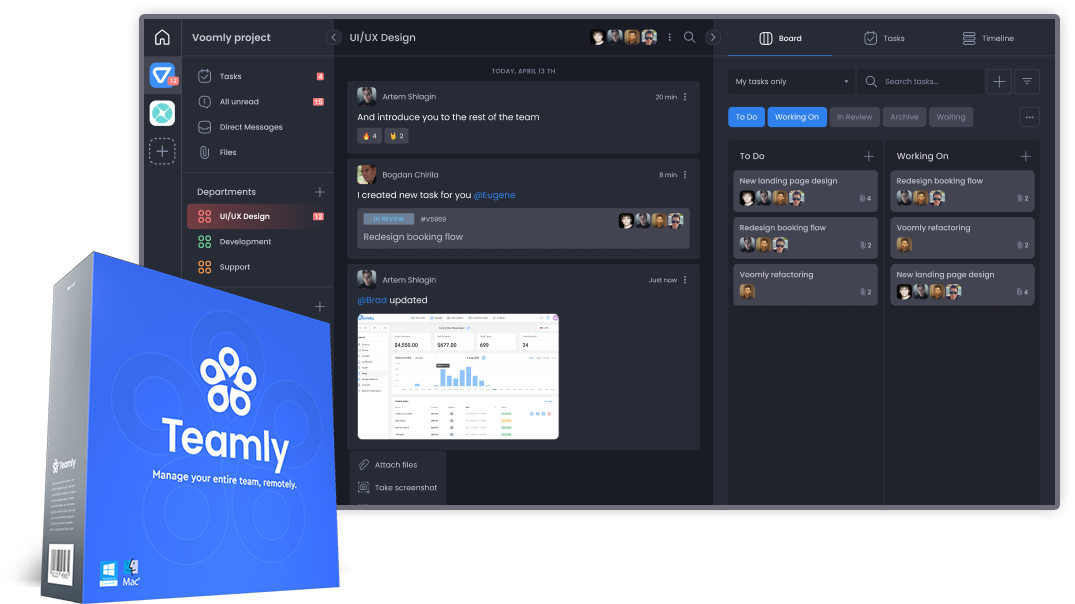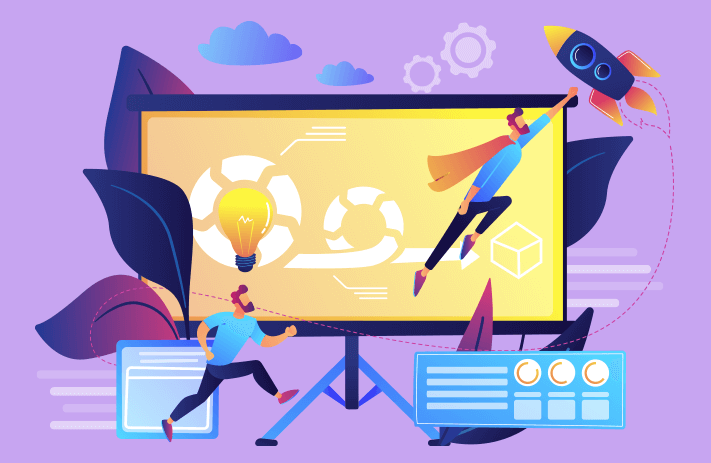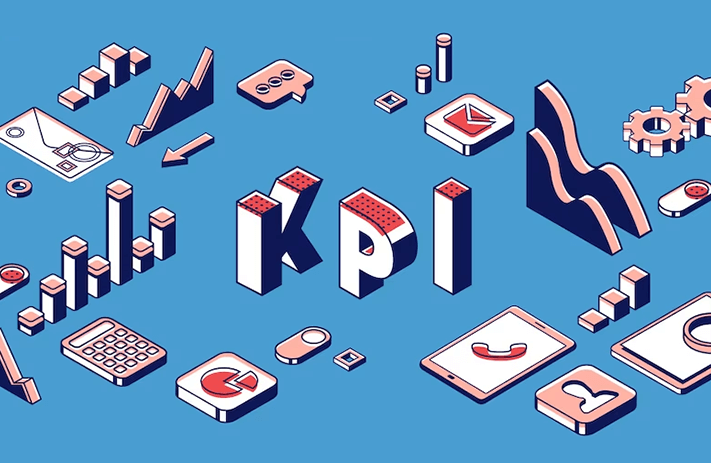
Click the button to start reading
Why you should use Kaizen for your Project Management Team
If you want to be at the top of your game, you need to continuously improve. This is true for life as well as businesses. Kaizen is built on the idea that small changes lead to big improvements over time.
The beauty of Kaizen is that it can be tailored to fit any type of situation. Whether you’re trying to increase productivity in the workplace or streamline a project, Kaizen can help you achieve your goals.
In this post, we’ll look at the Kaizen approach in greater detail and show you how to optimize your project teams by using its process.
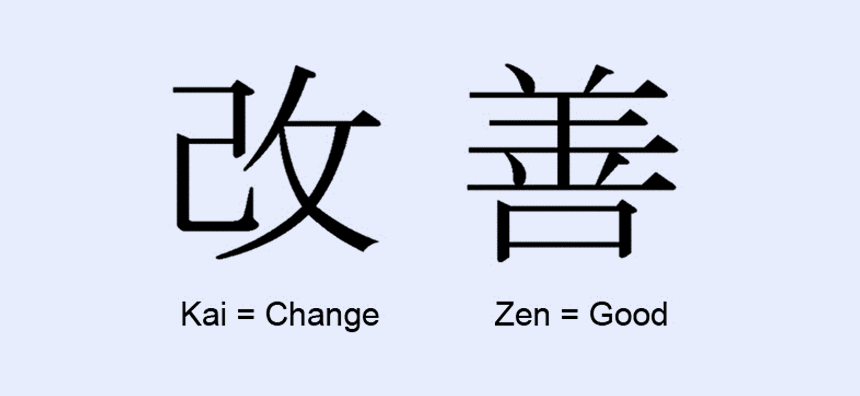
What is Kaizen?
Defined
When broken down etymologically, Kaizen translates “change” (kai) and “good” (zen). Together, these words form the basis of the Kaizen philosophy: “change for the better.” In business, this means striving for continuous improvement in all areas of the company. This could be anything from improving customer service to increasing productivity.
The key principle is that small incremental improvements lead to big transformations over time. Or another way to say it is, that it’s all about making incremental changes that add up to create significant results.
In essence, Kaizen is part philosophy and technique. The philosophy emphasizes the mindset of always looking for ways to improve and never being satisfied with the status quo. The technique provides a framework for solving specific problems or improving specific areas.
Origins
It was first introduced into Japanese businesses after World War II as a way to improve productivity and quality. It was specifically used in the automotive industry, which was struggling to compete with Western companies. The Kaizen approach has since been adopted by companies all over the world, including some of the largest and most successful organizations.

Kaizen approach: Project Management
If Japan’s competitive success after WWII was any indication, it seemed that the Kaizen approach could work for other businesses outside of Japan. And it has. Kaizen principles have been adopted by project management teams from all over to help create actively engaged and high-performing teams.
There are several reasons for this.
For one, the Kaizen approach helps to identify and reduce waste in all forms. This is important because it can help teams to focus on the most important tasks and avoid distractions that can lead to project delays.
In addition, Kaizen philosophy encourages everyone to be actively involved in continuous improvement processes. This sense of ownership and responsibility can help to engage team members and get them more invested in the success of the project.
Finally, the Kaizen approach can help to create a culture of continuous learning. By encouraging team members to share their knowledge and experience, you can create an environment where everyone is constantly learning and growing. This type of culture is essential for long-term success.
What’s the time commitment?
Kaizen activity for project management usually takes place in short, daily, or weekly intervals called “Kaizen events.” These events are designed to focus on a specific process or area that needs improvement.
During a Kaizen event, the team will brainstorm ways to improve the process and then implement those changes. The hope is to make continuous improvements to your business processes that will lead to better overall results.
Different uses…
You can use Kaizen in several different ways:
- To improve productivity in the workplace
- To reduce waste and unnecessary costs in a business
- To streamline processes
- To improve quality control
- To enhance customer service

How Kaizen program management works
If you want to try out the Kaizen approach for your next project, there are a few things you need to keep in mind…
First, aim for small but consistent execution
The key to success for project managers is to aim at continual improvement. This should help your project team enhance their quality management by implementing improvements.
If you were a management consultant, you would focus on helping the team to identify areas for improvement and then developing a plan to tackle those areas. This could involve anything from process changes to new methods of communication.
Second, use structured frameworks
Structured frameworks are an important part of Kaizen program management. It provides a level of direction for your team to follow as they strive for continual improvement.
There are a few different frameworks you can use, but one of the most popular is the PDCA cycle.
The PDCA cycle stands for Plan, Do, Check, Act. This framework helps you to identify a problem, come up with a plan to solve it, execute the plan, and then check the results to see if the problem has been solved or if there is room for more improvement. If not, you can adjust your plan and try again.
Third, find and eliminate waste
To optimize your project team’s productivity, you need to focus on eliminating waste. This could be anything from unused materials to wasted time.
There are a few different ways to do this:
- For one, you could streamline your processes. This involves anything from automating tasks to eliminating unnecessary steps.
- Another way to eliminate waste is by identifying and eliminating bottlenecks. This could involve anything from improving communication to investing in new technology.
- Finally, you could focus on improving quality control. This means ensuring that your team is following best practices and that they are catching errors early on.
Fourth, identify problems in processes rather than people
This means that you should look for ways to improve the process itself rather than trying to find someone to blame.
For example, if there is a problem with communication, you should focus on finding a way to improve communication rather than placing blame on any one person.
The same goes for any other area where you see a potential problem. It’s important to remember that team members are more likely to be open to change if they feel like you’re making small improvements to dial in the process rather than finding someone to blame.

Fifth, leverage digital tools
There are a few different ways to use digital tools to support your Kaizen program management.
For one, you can use project management software to help you plan and execute your Kaizen events.
You can also use data analytics tools to help you identify areas of improvement. These tools can help you track metrics and understand how your team is performing.
Finally, you can use software tools to share information with your team. This could be anything from using a chat tool to set up a shared document repository.
One huge benefit to leveraging digital tools is that modern technologies can help you identify transformational projects that will have the biggest impact on your organization. In other words, it can help you focus on the right things so that you can continuously improve.
Sixth, standardize operation procedures
One way to ensure that your team is consistently improving is to standardize operation procedures also known as SOPs.
This means that you should document the best way to do things, i.e. benchmarking, and then make sure that everyone on your team is following those procedures. Without benchmarking it’s difficult for businesses to analyze the results and it will be nearly impossible to measure improvements resulting from Kaizen Events.
Summary to article
If you want your team to be productive, you should consider using the Kaizen approach. Not only will it help you improve processes, but it’s also low pressure and low stress due to its focus on small, incremental changes.
So, if you’re looking for ways to improve communication or eliminate waste, Kaizen could be a good fit for you.

